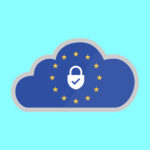
“In the next five to 10 years,” Colangelo said, “data is going to be what having a good marketing agency on Madison Avenue was like in the ‘50s and ‘60s. It’s going to be something that you’re not just looking at when you have to make a decision — it’s going to be something that you’re looking at all the time.”
Colangelo co-founded Bear Analytics less than a year ago, after having worked in business development at the Biotechnology Industry Association (BIO) since 2008. Colangelo was a principal strategist behind the development of BIO’s partnering software system, which he describes as a kind of match.com for member companies. The platform allows companies in advance of BIO events to specify the technologies they’re interested in learning more about; the program then sets up meetings based on mutually expressed interests. At BIO’s largest event in 2013, for example, the association arranged 26,000 face-to-face meetings over three days.
LISTENING TO DATA
The wealth of data collectedby BIO’s platform also proved useful for many other purposes, such as helping the association refine its marketing strategies. For example, if the data showed that BIO events were attracting larger numbers of attendees who were academics, Colangelo said, then BIO could tailor key messages to them. Over time, his team began expanding their analyses to revenue forecasting and other uses — basically “anything we could put a number on,” Colangelo said. “The underlying concept was that data was powering the decision-making.”
“What I learned — and a lot of this was a culture that my boss at BIO set up from the beginning — was that if we put the processes in place where we identify our sources of information and the key metrics that are moving our event and getting our people to attend,” Colangelo said, “then it becomes very easy to integrate that into all of our business decisions. We had a weekly meeting where we would show the same stats week over week in a quick and concise manner, because the team knew exactly what they had to put together.”
That routine analysis of data was critical. It’s easy to let data be “very much an on-demand exercise,” Colangelo said. “It’s like Netflix — I want my information when I want it, but I’m not thinking about it the rest of the time.” But by looking at data earlier in a business cycle, you might make better decisions. “Timing is a huge component in data.”
At BIO, Colangelo also grappled with problems common to associations, including the fact that the technology systems collecting information “don’t necessarily talk to one another.” About a year ago, Colangelo and a BIO colleague, Eric Misic, now Bear Analytics’ vice president of business development, realized that there might be a demand for the kinds of strategies and technical solutions they were successfully using at BIO among event organizers and other organizations with similar business problems. And Bear Analytics was born.
Data can be scary, no matter what the size of your organization. So, Convene asked Colangelo, where do you start? Here’s his advice:
1. Create a data inventory
“We often go in and talk with somebody and they say, ‘This all sounds great, but we’re not collecting any data,’” Colangelo said. But that client maybe organizing 15 events a year where data is collected through registration, via event apps, and by sponsors, and may not possess the data only in the sense that it’s not on their own servers — it’s on their partners’.
So the first thing to determine is: Where is your data? Where has it been in the past? As you start to ask these questions around events, you may realize how much information your partners hold. And that can be risky. “Your partners are in the service business, not the data-storage business,” Colangelo said. “So we encourage our clients to find out how long your vendors — registration vendors, conference-app providers, your publications — are going to hold your data. Sometimes it’s as little as six months to 18 months.”
2. Share your data within your organization
Don’t let your data discussions be limited to just a few senior people. “Sometimes I find that a lot of senior folks want to feel like they’re on the ‘inside,’” Colangelo said. “And senior staff may ask the basic questions, like how many attendees were member or non-member? How many were domestic versus international? That’s a great place to start, but those are broad, broad categories.”
But the more junior people — “who are answering customer calls, the folks that are the face to your clients because they’re interfacing with them on a daily basis when they have problems or issues — probably are the ones that are better in tune with where your event is heading than senior staff,” Colangelo said. But they may presume that the data that could help drive decisions isn’t available, or is too costly or difficult to obtain.
3. Safely centralize your data
The downside of getting more staff involved with data “is they’re going to make errors,” Colangelo said. “I always advocate a double copy. Put one copy in a public place, on an internal kind of company server. Put one or two people in charge of collecting it and putting it in there and maintaining it. And then take exact copies of that raw data — always raw data, because it tells every story. It’s like a stem cell.
“And that is your master,” Colangelo said. “There’s a backup, in case somebody accidentally hits delete, [or] goes home early for the weekend.”



